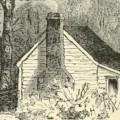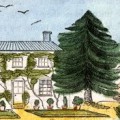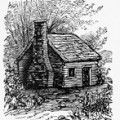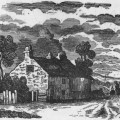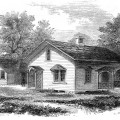What would a collection of vintage images of historical buildings be if it did not have at least one grand castle in the group? Granted, this castle drawing is not the typical style of construction that I think of when dreaming about a far away castle, but this is indeed a real castle. Bruce Castle is shown here as it looked in 1686 – this engraving was copied from a print by a painter named Wolridge. (I could only find a single reference to the artist and his painting. The painting is housed in the Bruce Castle Museum.)
The buildings depicted in this engraving and which have survived to become part of Bruce Castle Museum are believed to date back to around 1514. Foundations on the property and historical record indicate that there was a dairy on the site. It is believed the original castle was built by Earl Waltheof. The Earl married a niece of William the Conqueror and was given his earldom of Northampton and Huntingdon as part of her dowry. Their daughter married King David I of Scotland.
King David’s grandson, Robert Bruce (Robert de Brus) made an unsuccessful run for the crown of Scotland in 1290 and retired to his grandfather’s estate in Tottenham. Bruce repaired the castle, acquired another manor house and called both structures Manor of Bruses. (That explains the Bruce part of the name but I did not find any historical record as to why this buildings became known as a castle.) King Edward II would seize the lands in 1306 and retain it until 1335 when the manors began to change hands with the whims of each successive reigning monarchs.
Edmund de Chesthunte, one of the King’s falconers would be given the manor and his son Robert de Chesthunte, alias Fauconer inherited the manor. I bring up these two particular owners because some believe the one remaining tower (there were originally three) is thought to have been a falconry which has more than a little logic behind it if one of the King’s falconers had owned the manor.
Sometime between the 1300s and the early sixteenth century, the original manor was destroyed. The residents of the manor could make for a fine TV miniseries with tales of revolt, mistresses, a resident ghost – Constantia, first wife of Henry Hare, 2nd Baron Coleraine (1635-1708); and a progressive school house. (The Hill School was deemed progressive for the early 1800s because they did not “teach” but inspired their students to learn and banned the use corporal punishment among other things.)
From what I could figure out, the home changed families a number of times and each family remodeled the home to their tastes or the styles of the period. Structures were torn down, reconfigured and rebuilt. Some were never rebuilt.
The house and the park-like grounds surrounding it were bought in 1891 by the Tottenham Urban Design Charette (UDC). It became Tottenham’s first public park when it opened in 1892. Bruce Castle has housed the local history collection since 1906, when it became a museum.
This vintage engraving, shows and early version of the home. Since 1686, when the original version of this picture was painted, the building and front entrance have been changed a number of times. The fenced-in area now includes the tower as well as the front lawn.
Maybe you’ll find all that history inspiring and want to visit the castle if you ever happen to travel to Tottenham. For the rest of us, we can enjoy this vintage castle drawing and dream of what grand ladies and gentleman have lived and visited this spacious home.
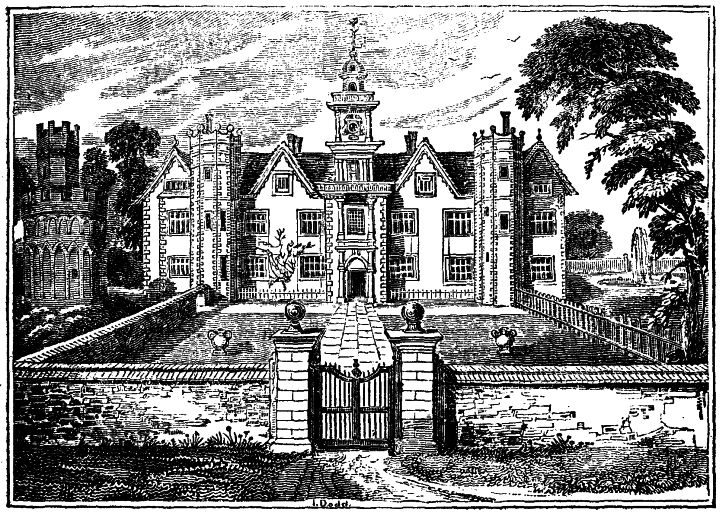
This image is copyright free and in the public domain anywhere that extends copyrights 70 years after death or at least 120 years after publication when the original illustrator is unknown.
